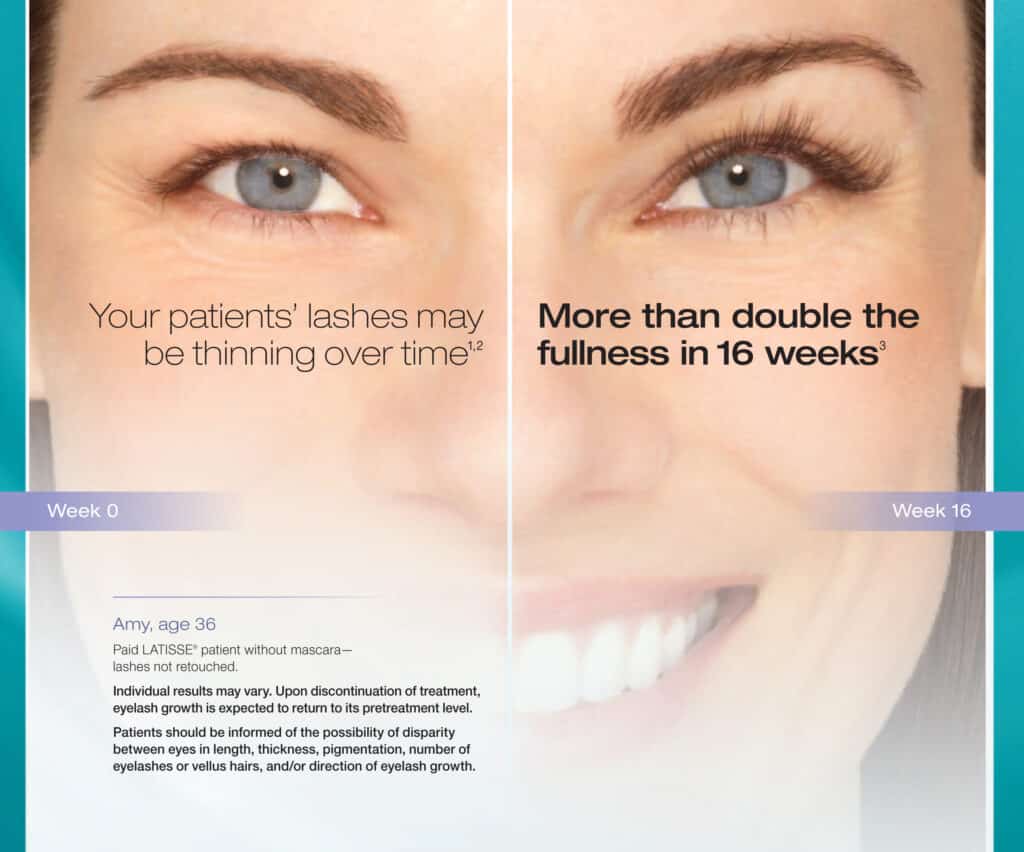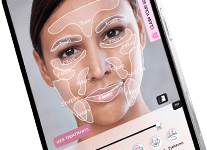What is LATISSE®?
LATISSE® eyelash enhancer is the first and only U.S. Food and Drug Administration-approved cosmetic treatment for increasing the length, thickness and darkness of eyelashes. Available only through prescription, it is applied once a day to the base of the upper eyelashes. Results may be apparent within four weeks; full results take sixteen weeks.
Exactly why LATISSE liquid solution causes eyelashes to grow is unknown. However, its active ingredient, bimatoprost, seems to increase the number of hairs in, and the duration of, a hair follicle‘s growth period. The result is longer and fuller lashes.
Once LATISSE treatment is discontinued, its benefits gradually end.




